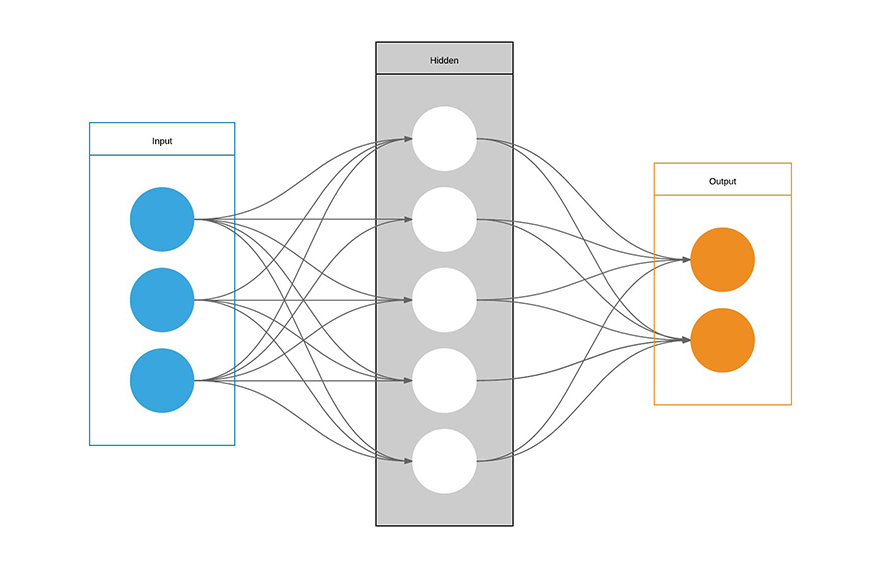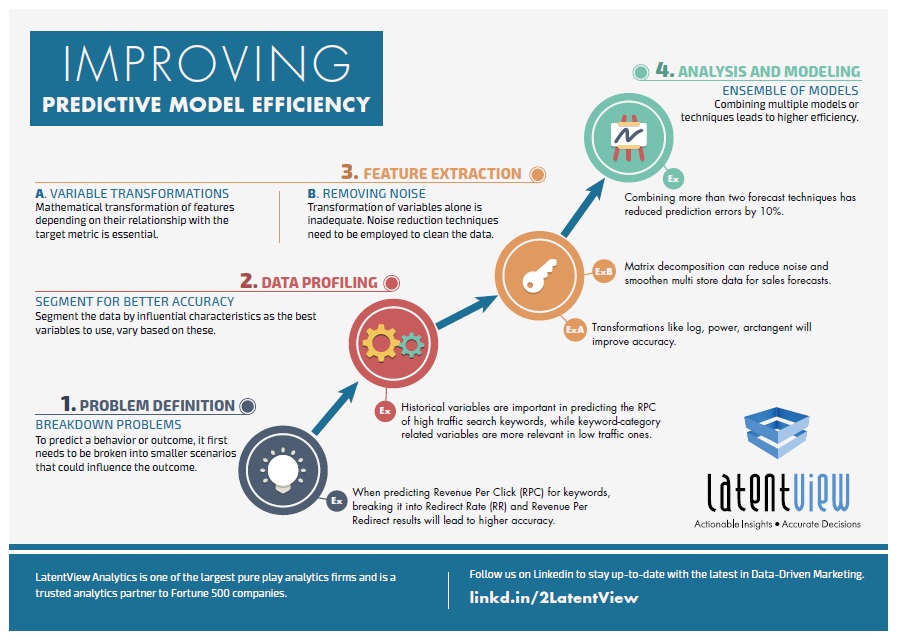While developing or building a Predictive Model, factors such as combining an ensemble of models and techniques, cleaning out data, segmentation and definition of a clear problem statement help increase efficiencies by about 10 – 15%. The below infographic depicts the five steps that will help improve the efficiency of your Predictive Model:
1. The first step is to break down the problem at hand. By defining the problem at hand and further breaking it down into smaller scenarios, it will be easier to obtain a clearer picture and define factors that could influence the final result.
2. When it comes to Data Profiling, it is important to segregate the available data based on quantity, source and type. By understanding the motivating factors, studying data (both online and offline), buying/browsing patterns of the customers, past patterns can be used to predict future trends.
3. Once the data is extracted, it is important to remove noise as it hinders most types of data analysis. While noise can be in the form of low-level data errors, even data that is irrelevant or hardly relevant can hinder data analysis. Thus, if the goal is to enhance the data analysis noise reduction techniques need to be employed to clean up the data.
4. During feature extraction, it is also important to consider the mathematical transformation of features based on their relationship with the target metric. This helps improve overall accuracy and efficiency.
5. The final step is to do an analysis to find the best predictive analytics model based on the above factors. A careful combination of predictors performs better customer prediction by considering multiple aspects of your customers and their behaviours. This technique leads to higher efficiency.
Irrespective of the end goal, predictive modelling can help a company transform piles of customer data into valuable insights and help a company gain the competitive edge over their peers by predicting what the future will look like. To say that it is a game changer is putting it mildly. By figuring out what makes a customer tick and predicting their purchasing patterns for the future, companies can gain the first-mover advantage that will help put the odds of success dramatically in their favour.





